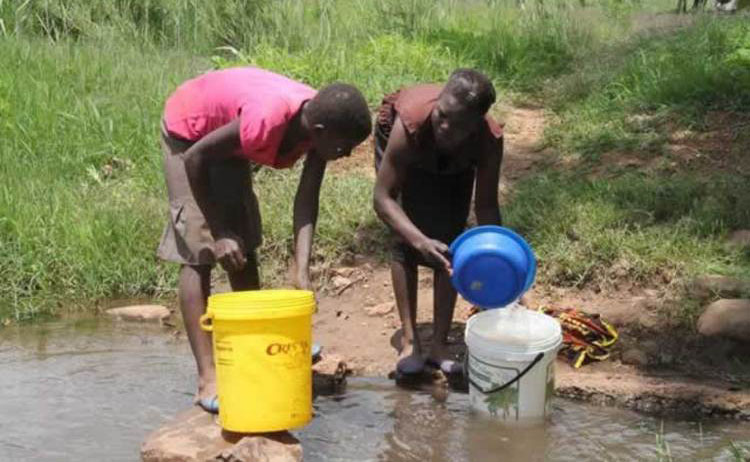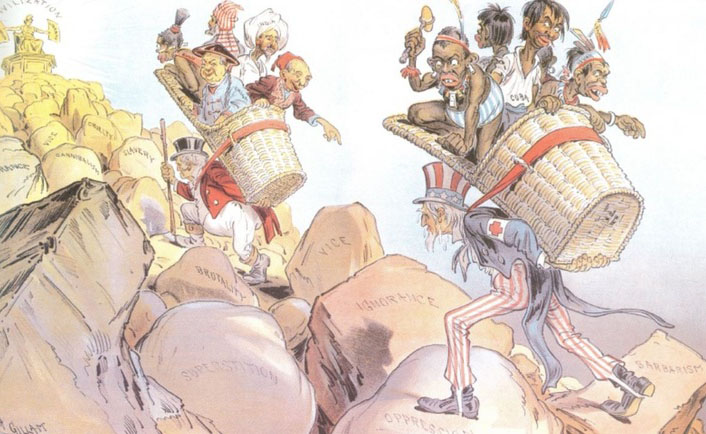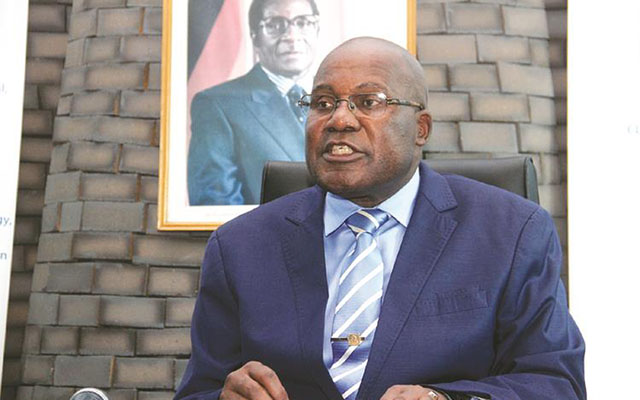Harare’s water woes continue

Julia Mugadzaweta Features Correspondent
World Water Day is celebrated annually on March 22nd. This year’s theme was “Why Waste Water?”
It was in support of Sustainable Development Goal 6.3 which aims to improve water quality by reducing water pollution, halving the proportion of untreated waste water and reusing waste water.
Section 77 (a) of the Zimbabwean Constitution guarantees every person’s right “to safe, clean and portable water.”
Unfortunately, not all Zimbabweans have access to safe, clean and portable water and this has periodically led to outbreaks of waterborne communicable diseases such as typhoid and cholera.
For example, December 2016 saw a typhoid outbreak in Harare which by early January had claimed two lives with over 100 suspected cases.
The situation was eventually brought under control, but has now resurfaced with Harare City Council Health Services director Dr Prosper Chonzi confirming reports of typhoid in Hatcliffe.
“I can confirm that we have two confirmed cases of typhoid. One person — a man aged 28, died at Harare Central Hospital of kidney failure which we suspect is delayed typhoid treatment. His relative, a 16-year-old girl is receiving treatment after testing positive.
“We suspect that they were drinking contaminated water from a borehole. Four of the seven boreholes in the immediate vicinity have bacterial growth.
“The Hatcliffe cases are new and their water situation is quite dire especially in the new settlements around Glen Forest,” he said.
Unsafe drinking water is a major health hazard however, residents are often left with few options and go for the one they deem most safe.
Walter Ngandini, a resident of Hatcliffe, said his family opted for borehole water because the water that council provided was not safe for consumption as it even had an unpleasant look to it.
“We have been using the boreholes for almost a year now because the water from the tap is not safe. Just from looking at the colour you can see that something is wrong with it.
“Some of us are even hesitant to use it for our laundry so we will definitely not use it for cooking or for cleaning. Borehole water and wells are the only other option we have and for me it’s a safer choice,” he said.
Acting Harare Water director, Engineer Hosiah Chisango confirmed that some boreholes in the Hatcliffe area were contaminated and have been decommissioned.
“We are aware of the typhoid cases in Hatcliffe and as Harare City Council, we have made our assessment and it is pointing to borehole water that has possibly been contaminated.
“We have put in place borehole filters for those boreholes that are not heavily affected. The four out of seven boreholes that we suspected to have been infected have been decommissioned.
“We are also increasing water supply to the area around Hatcliffe that has access to council serviced water,” he said.
In the past, council insisted that drinking water was safe for consumption despite its physical appearance — the colour and odour — which is sometimes not appealing saying that it follows established guidelines and standards.
Harare City Council continues to insist that they treat water to World Health Organisation guidelines and that the water they produce meets requisite standards.
Council secured a $144 million loan from the Chinese Export and Import Bank in 2013 and has used part of the money to buy equipment for the refurbishment of the 63-year-old Morton Jaffray plant.
The Morton Jaffray plant is where the city’s water is safely treated and accounts for more than half of the water which the city uses.
Engineer Hosiah Chisango said Morton Jaffray was built to provide services for a smaller Harare which has since grown big.
“Morton Jaffray water treatment plant has three units which supply and deliver water to the greater part of Harare and not all of Harare mainly because the original infrastructure was designed to serve a population of only 300 000 people.
“The oldest, Unit One was built in 1954 and Units Two and Three were constructed in 1976 and 1994 respectively,” he said.
Since the construction of the water plant the city’s population has since increased to almost 2,5 million without a corresponding expansion of water infrastructure.
In the past Harare City Council has been accused of not being able to properly filter and treat the water it gives to residents.
Due to lack of adequate infrastructure to treat the 800 million litres of water needed daily by Harare, Engineer Chisango said they had resorted to water rationing.
“The Central Business District and Mbare suburbs receive water 24 hours a day however, northern suburbs which include Mabelreign and Marlborough receive water three days a week.
“Southern suburbs receive water two to three days a week, whilst Mabvuku and Msasa do not have running tap water at the moment. However, there are alternatives.
“We dispatch bowsers and also there are public boreholes. That is the state of water provision in the city at the moment” he said.
Engineer Chisango added that after the Morton Jaffray works are completed the state of water provision in the city would improve.
“At the moment Morton Jaffray is producing 470 million litres of water which is only 40 percent of what we need as a city.
“After the completion of the refurbishment and new pump stations are in place as well as commissioning of a new plant is also complete, we will be able to produce 670 million litres of water everyday. This is a great improvement from what we used to produce and am happy to say the works are almost 90 percent complete,” he explained.
Though the improvements are noticeable Harare needs at least 1 200 mega-litres to enable every household to have water everyday.
Globally, the vast majority of all the wastewater from our homes, cities, industry and agriculture flows back to nature without being treated or reused — polluting drinking, bathing, irrigation, losing valuable nutrients and other recoverable materials.
In Harare, Mukuvisi River which is one of the major tributaries of water for Lake Chivero, the city’s main water source has been worst contaminated.
Its waters carry a malevolent greyish-green colour and a perpetual choking, acidic smell.
This is because of all manner of pollution that the river suffers from industrial and sewage effluent, and waste.
As the city’s water department has been failing to cope with water demand over the years, drinking water is extracted from shallow wells dug on the banks of the polluted river — Mukuvisi.
Engineer Chisango said efforts are being made to make sure areas in and around Harare could have access to clean water.
“The council is planning to penetrate areas like Caledonia, Whitecliffe and Hatcliffe that currently do not have access to clean serviced water.
“Most residents in these areas are forming cooperatives and working together to get onsite facilities which makes it easier for us to then work with them as council.
“Some areas such as Hatcliffe are however, a lot more difficult for us to access,” he said.
In a statement on World Water Day, the United Nations Children’s Fund (Unicef) said the rainy season this year has worsened access to clean and safe water for people in Zimbabwe.
“The challenge posed by the excessive rainfall is the high risk of contamination of the available water sources as both latrines and water sources are flooded.
“This further exacerbates the challenges of access to safe water, sanitation and hygiene,” the statement said.
UNICEF also encouraged all stakeholders to make the commitment and come together to ensure that children have access to clean water for their improved welfare and rights well into the future.
“In a changing climate, we must change the way we work to reach those who are most vulnerable. One of the most effective ways we can do that is safeguarding their access to safe water.”










Comments